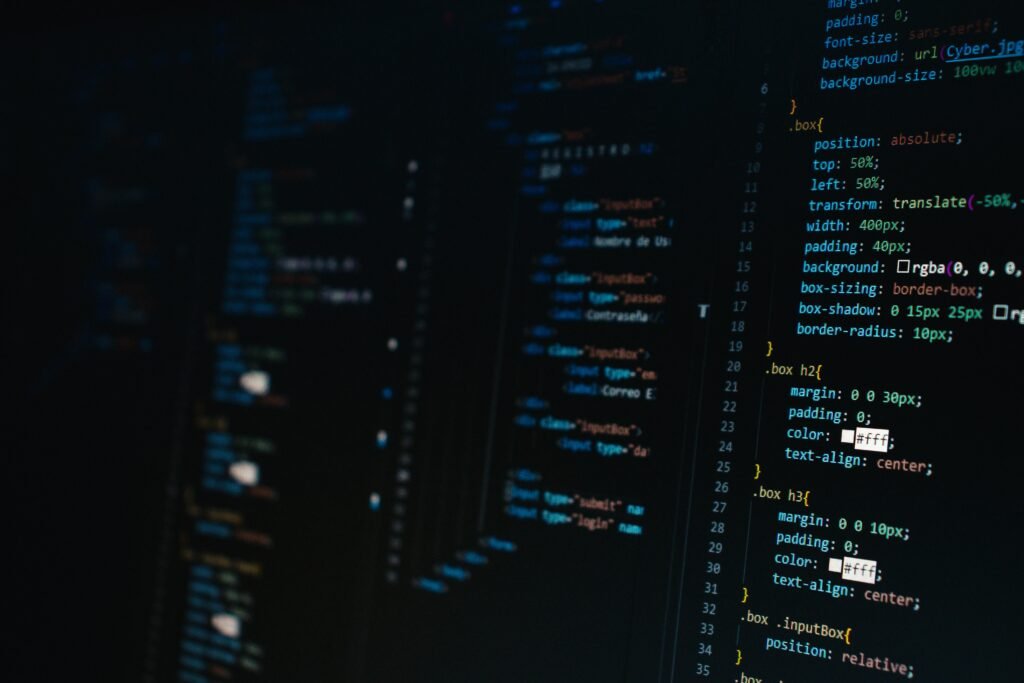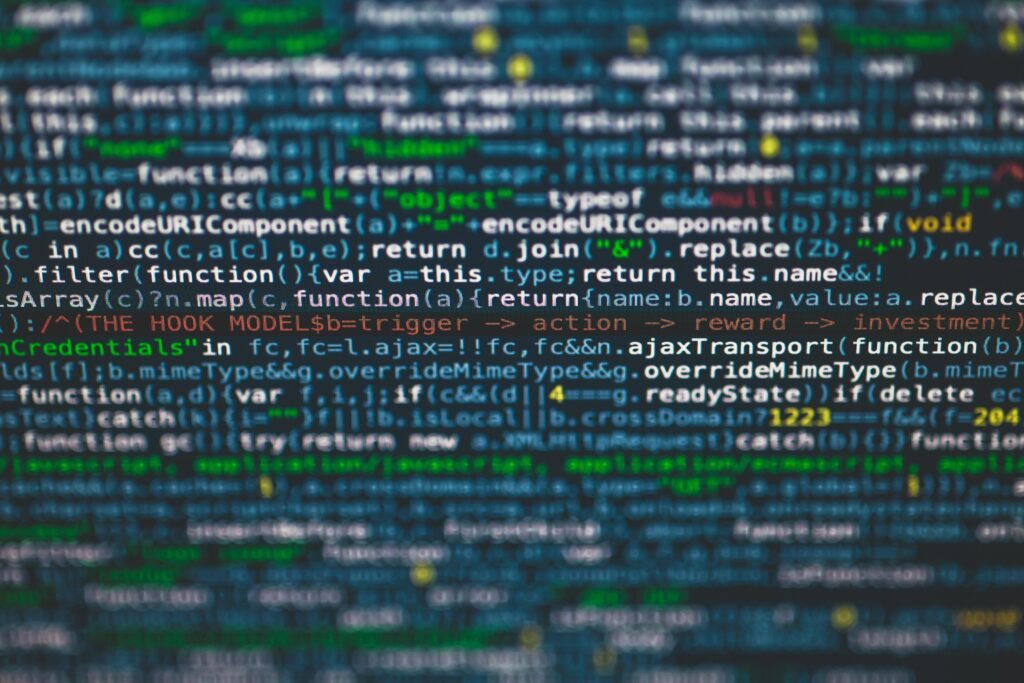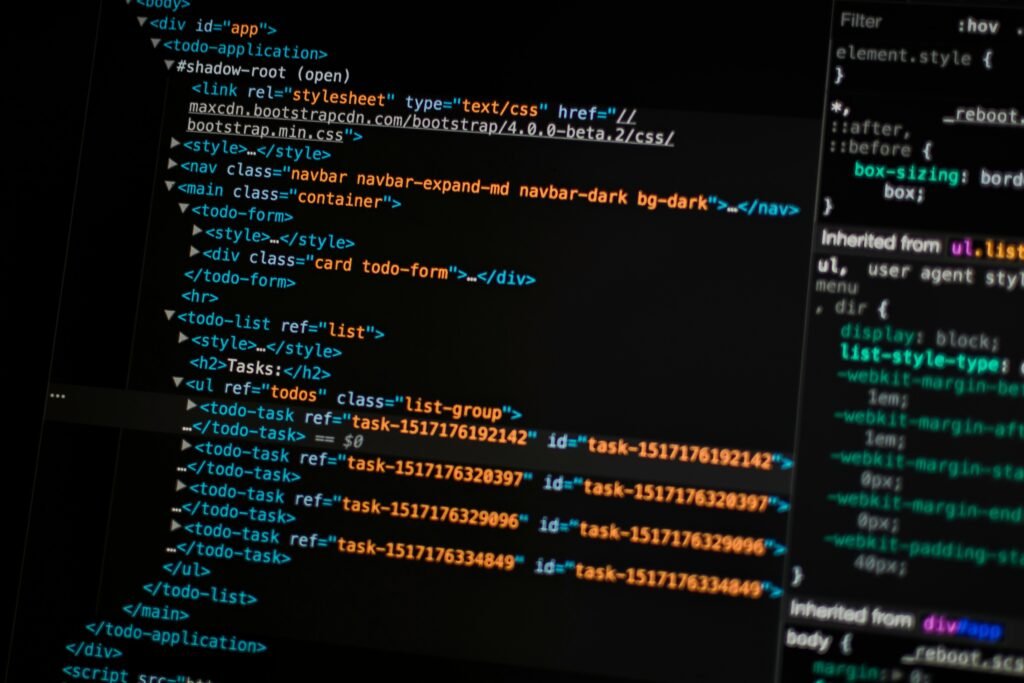
Understanding the Basics of Programming Languages
A programming language is a formal set of instructions that can be utilized to produce a variety of outputs, including software applications, scripts, or control systems. In essence, it serves as a bridge between human logic and computer processing, allowing developers to communicate with machines effectively. Programming languages can generally be categorized into two main types: compiled languages and interpreted languages. Compiled languages, such as C++ and Rust, require the source code to be translated into machine code before execution, which typically results in faster performance. In contrast, interpreted languages like Python and JavaScript are executed line-by-line, which may offer flexibility and ease of use but can lead to slower execution speeds.
The significance of programming in today’s technological landscape cannot be overstated. As digital transformation continues to shape industries, the demand for skilled programmers grows exponentially. Nearly every sector, from finance to healthcare, leverages programming for data analysis, automation, and digital communication. Consequently, understanding programming has become an essential skill for professionals across various fields, not just those directly involved in software development. The ability to write code not only enhances problem-solving capabilities but also positions individuals competitively in the job market.
Moreover, learning programming languages equips individuals with the tools necessary to innovate and create tailored solutions. It encourages logical thinking and fosters creativity, enabling one to build applications that can solve real-world problems. With the proliferation of online resources and platforms for learning programming, individuals have the unique opportunity to develop this valuable skill at their own pace. Thus, grasping the foundational concepts of programming languages is a crucial step for anyone interested in technology and its countless possibilities.
Choosing the Right Programming Language
Selecting the appropriate programming language is a critical step for anyone embarking on their coding journey. The ideal language largely depends on personal goals, the intended application, and industry trends. By analyzing different languages such as Python, Java, JavaScript, C++, and Ruby, learners can better align their skills with market demands.
Python is widely recognized for its versatility and simplicity, making it an excellent choice for beginners. It is commonly used in web development, data science, artificial intelligence, and machine learning. Python’s growing popularity in academic and industry settings emphasizes its strong job market, particularly in data-related fields.
Java, being one of the oldest programming languages still in wide use, often appeals to those interested in large-scale enterprise applications. Its portability across different platforms due to the Java Virtual Machine (JVM) makes it suitable for web and mobile application development. Many large companies specifically seek Java developers, underscoring its relevance in the tech industry.
JavaScript, vital for web development, is increasingly essential as the internet continues to grow. It is particularly useful for building interactive web applications and has extendable frameworks like Angular, React, and Vue.js that assist developers in simplifying their processes. With the rise of web technologies, demand for JavaScript skills has surged in recent years.
C++ offers a different set of capabilities, being a go-to language for system programming, game development, and applications requiring high performance. Though it may have a steeper learning curve, those aspiring to work in specialized fields or domains like game development may find it advantageous.
Lastly, Ruby, known for its elegant syntax and robust framework (Ruby on Rails), is often favored for web application development. Its focus on simplicity allows for quick application development and deployment. While its popularity has fluctuated, Ruby developers are still sought after, especially in startups and innovative tech environments.
Ultimately, choosing the right programming language should involve careful consideration of one’s career aspirations, project goals, and the existing demand in the industry. Understanding the strengths and applications of each language can facilitate informed decisions, paving the way for a successful programming venture.
Setting Realistic Goals and Expectations
When embarking on the journey to learn a programming language, setting realistic goals and expectations is paramount. This process not only aids in structuring one’s learning approach but also helps maintain motivation throughout the phases of this intricate learning experience. At the outset, it is crucial to be aware that mastering a programming language is a gradual process, typically involving distinct stages ranging from beginner to advanced levels.
Initially, learners should focus on creating short-term, attainable goals. These might include completing a basic online course, writing simple code snippets, or understanding fundamental concepts such as syntax and variables. Progress can be measured through practical exercises, quizzes, and creating small projects that consolidate learned skills. As one advances, it’s vital to adjust these goals accordingly, aiming for more complex tasks like developing functional applications or contributing to open-source projects. Setting benchmarks supports a clearer understanding of one’s growth and encourages continual development.
Managing expectations regarding the time commitment required is also essential for a successful learning journey. Time frames can vary significantly based on individual pace, prior experience, and the complexity of the programming language being learned. It is advisable to allocate consistent daily or weekly hours to practice coding, thereby establishing a productive routine. Embracing a positive mindset is equally important; acknowledging that setbacks are a normal part of the learning process can foster resilience and perseverance, which ultimately leads to success.
In conclusion, by setting achievable goals, measuring progress realistically, and maintaining an optimistic outlook, learners can effectively navigate the complexities of acquiring a new programming language. Understanding that this journey requires patience and dedication will enrich the overall experience and facilitate long-term proficiency.
Finding the Right Learning Resources
When embarking on the journey to learn a programming language, selecting appropriate learning resources is paramount. Given the vast array of options available, learners must evaluate the type of materials that best suit their individual needs and learning styles. Among the most popular resources are online courses, textbooks, coding boot camps, and community forums.
Online courses are renowned for their flexibility and accessibility, offering an opportunity to learn at one’s own pace. Platforms like Coursera, Udemy, and edX provide structured curricula that can cater to various levels of expertise. Additionally, they often feature interactive assignments and community discussions, enhancing the overall learning experience. However, it is important to assess the credibility of the course and the qualifications of the instructors.
Textbooks serve as another traditional but effective resource. While they may lack the interactivity of online courses, they can offer comprehensive coverage of programming concepts. Selecting a textbook that encourages practical exercises can significantly enhance the learning process. It is essential to look for current editions, as programming languages evolve rapidly, and outdated texts may not reflect the latest practices.
Coding boot camps are intensive training programs designed to teach programming skills in a short period. They typically involve hands-on projects and collaborative work, which can be beneficial for those who thrive in structured environments. However, these programs can be expensive and may not be suitable for everyone, particularly those seeking a more self-paced learning approach.
Community forums, such as Stack Overflow and GitHub, play a vital role by providing platforms for learners to ask questions and interact with experienced programmers. They can be invaluable to those who benefit from peer support and real-world problem-solving, helping to reinforce concepts learned through other resources.
Ultimately, the key to successful programming language acquisition lies in choosing the right blend of resources that align with one’s learning objectives, preferences, and budget.
Practical Learning: Hands-On Coding
Hands-on coding is an essential component in the journey of mastering any programming language. Theoretical knowledge is important; however, the practical application of this information is what truly solidifies one’s understanding and competencies. Engaging in hands-on practices not only aids in grasping the fundamentals but also familiarizes learners with real-world scenarios and problem-solving techniques integral to programming.
One effective strategy to enhance practical learning is by building small projects. These projects allow individuals to apply concepts learned in a structured way. Start with basic applications, such as a to-do list or a simple calculator, and progressively challenge oneself with more complex systems as skills improve. This iterative process of writing, testing, and revising code fosters a deeper understanding of syntax, logic, and program design.
Another beneficial tactic is contributing to open-source projects. The open-source community thrives on collaboration, and by participating, learners can engage with experienced developers, receive constructive feedback, and observe diverse coding styles and practices. This real-world experience nurtures an awareness of best practices and exposes learners to various coding scenarios that they may not encounter in a classroom setting.
Coding challenges, such as those found on platforms like LeetCode or Codewars, also play a vital role in practical learning. These challenges encourage users to solve problems using code, reinforcing critical thinking and algorithmic skills. Furthermore, they offer a sense of accomplishment as learners progress through increasingly difficult challenges, ultimately enhancing confidence in their programming abilities.
Experimentation is a cornerstone of effective coding practice. By testing hypotheses or attempting to solve problems in innovative ways, individuals cultivate creativity and resilience—two essential characteristics of adept programmers. Embracing errors as learning opportunities and adapting from failures ultimately strengthens problem-solving capabilities. In conclusion, practical learning through hands-on coding significantly boosts programming language proficiency by fostering critical skills through real-world application and collaborative experiences.
Utilizing Community and Networking
Engaging with a supportive community can significantly enhance your journey into the world of programming. The act of learning a programming language is not merely an individual endeavor; it is often augmented by insights, knowledge exchange, and collaborative learning. Online programming communities provide a platform where novices and experienced developers can interact, seek guidance, and share resources. Websites such as Stack Overflow, GitHub, and various coding forums are excellent starting points. These platforms enable learners to post queries, provide answers, and engage in discussions that deepen their understanding of programming concepts.
In addition to online communities, attending meetups and coding workshops offers valuable opportunities to connect with like-minded individuals who share your programming aspirations. Local tech meetups often host speakers, panel discussions, and networking sessions that can help you build contacts within the programming sphere. Engaging in group learning, whether it be through coding boot camps or study groups, can also reinforce your skills. Collaborative exercises stimulate problem-solving abilities and enhance comprehension of programming languages.
Furthermore, leveraging social media can amplify your networking efforts. Platforms such as Twitter and LinkedIn are populated by professionals who frequently share articles, tutorials, and industry insights. By following influential coders or joining programming groups, you can stay updated on the latest trends and best practices. Engaging with others in this space allows you to ask questions, post your progress, and celebrate accomplishments, which contributes to staying motivated.
Ultimately, forging connections in the programming community facilitates a more enriched learning experience. Sharing knowledge and seeking help are essential components of mastering a programming language. Such collaborative practices foster not only a sense of accountability but also a feeling of belonging within the complex, ever-evolving world of coding.
Tracking Progress and Building a Portfolio
As one embarks on the journey of learning a programming language, tracking progress is crucial for maintaining motivation and evaluating growth. Documenting learning milestones allows learners to identify strengths and weaknesses, which can inform future studies. Additionally, having a clear record of acquired skills can help in setting realistic goals and timelines. Regularly assessing progress, whether weekly or monthly, fosters a sense of accomplishment and encourages a deeper understanding of the material.
Building a programming portfolio is an essential step for learners to showcase their skills and projects to potential employers. A well-structured portfolio should highlight key projects that demonstrate proficiency in different programming languages, frameworks, and tools. Each project should include a comprehensive description that covers the project objectives, technologies used, challenges faced, and solutions implemented. This not only illustrates the developer’s technical abilities but also demonstrates problem-solving skills, attention to detail, and creativity.
Project documentation can greatly enhance the effectiveness of a portfolio. Including code snippets, design decisions, and reflection on the learning process adds depth to the showcased work. Moreover, it is beneficial to incorporate a diverse range of projects, from simple applications to more complex systems, to reflect versatility and adaptability. This variety, accompanied by a clear narrative of the development process, allows potential employers to grasp the candidate’s complete skill set.
In the digital age, platforms like GitHub have become invaluable for managing and presenting programming portfolios. By hosting projects on GitHub, learners can set their repositories to public, enabling recruiters to easily access their work. Moreover, utilizing README files to summarize each project further enhances their appeal. Engaging with the community through contributions to open-source projects can also provide beneficial networking opportunities and showcase collaborative skills. A strong portfolio can significantly improve prospects during job applications and interviews, making it an indispensable asset for any aspiring programmer.
Overcoming Challenges and Staying Motivated
Learning a programming language is an exciting yet often daunting journey, with various challenges that can impede progress. One common obstacle learners face is feeling overwhelmed by the sheer volume of information and concepts they must grasp. This feeling may lead to frustration, particularly when students encounter persistent bugs or complex problem-solving scenarios. To mitigate these feelings, it is essential to adopt a positive mindset that views challenges as opportunities for growth. By reframing setbacks as learning experiences, students can develop resilience in their coding journey.
Another significant hurdle is maintaining motivation. The initial excitement often wanes as learners progress, making it critical to establish a support system. Seeking mentorship from experienced programmers can provide invaluable guidance and encouragement. Mentors can offer insights drawn from their experiences, helping learners navigate challenges more effectively. Joining online communities, attending coding workshops, or participating in local meetups can also foster connections with fellow learners, creating an encouraging environment for sharing knowledge and resources.
Furthermore, balancing programming studies with personal life is vital for sustained motivation. It is crucial to set realistic goals and develop a structured learning plan that accommodates other responsibilities and interests. Integrating regular breaks and physical activity into the study routine can enhance mental clarity and prevent burnout. Time management techniques, such as the Pomodoro Technique, can help maintain focus and productivity while ensuring adequate rest periods. By prioritizing overall well-being and setting achievable milestones, learners are more likely to remain engaged and inspired throughout their programming journey.
Assessing Your Learning Timeline
Learning a programming language is an endeavor that varies significantly among individuals, influenced by several factors including the complexity of the language, the learner’s prior experience, and the amount of time they can dedicate to study each week. Understanding these variables will help you set a realistic timeline for mastering a programming language, whether you aim to become a beginner or achieve advanced proficiency.
Firstly, the choice of programming language impacts your learning duration. For example, languages such as Python or JavaScript are often recommended for beginners due to their simpler syntax and robust community support. A complete beginner aiming to learn Python could expect to grasp the fundamental concepts in approximately three to six months with consistent practice. In contrast, languages like C++ or Rust may require more time to learn due to their complex features, such as memory management, which might extend the learning timeline to six months or more for foundational understanding.
Your prior experience plays a crucial role as well. If you have a background in computer science or have already learned some programming concepts, you may find it easier to pick up additional languages. For instance, someone with experience in Java might find it simpler to learn C# than a complete novice, potentially allowing them to achieve proficiency in a shorter time frame. The learner’s commitment also matters; dedicating ten hours a week to study can lead to faster progress than a more sporadic approach.
To summarize, average timelines for reaching different levels of proficiency can vary widely based on the factors discussed. Setting achievable goals while tracking your progress is essential. By assessing your circumstances and adapting your learning strategy accordingly, you can pave your path to becoming proficient in a programming language within a timeframe that works for you.




